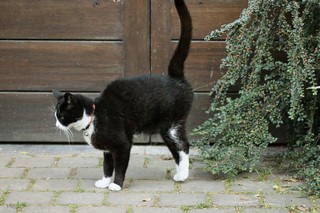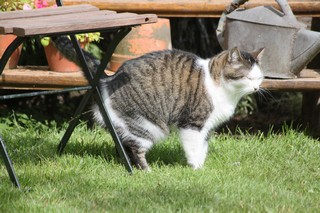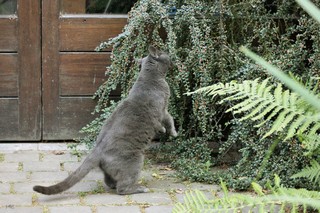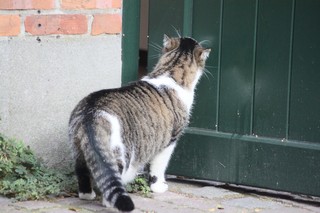Spraying
Spraying usually occurs in a visually obvious location and is usually directed at a vertical surface. Immediately before spraying a cat will sniff the area or object to be sprayed. When spraying, the cat moves to position its hindquarters so that they back onto the sniffed area, often this is achieved by backing up to the area. The tail is held vertically and often quivers (although this is not exhibited in all cats). For those cats that do display the tail quiver, this can occur with varying intensity. Urine is voided in a backwards (and sometimes upwards) direction onto the vertical surface.
The abdomen may be seen to contract several times. The cat often paddles its hind feet while spraying but this behaviour may be absent in which case the feet are still. Cats usually do not sniff the urine deposited after spraying (Bateson & Turner, 2000). Although much less common, cats can also spray while squatting. This behaviour can be differentiated from squat urination by paddling of the back feet and a quivering tail (as in erect-spraying) but the cat has lowered its hind quarters into a squat. Again the cat usually walks away without sniffing the urine (Bateson & Turner, 2000) although it is common for other cats to sniff such sprayed areas.
PseudosprayingOn occasion cats will exhibit a behaviour that is identical in presentation to spraying however no urine is produced and the duration of the posturing may be much shorter than during an episode of urine spraying. The clip below is repeated 4 times in succession to give you an opportunity to watch it carefully as it is a very brief example of pseudospraying. |
|||||||||||||

Compiled by:
Dr Sarah Ellis, Helen Zulch and Jenna Kiddie



